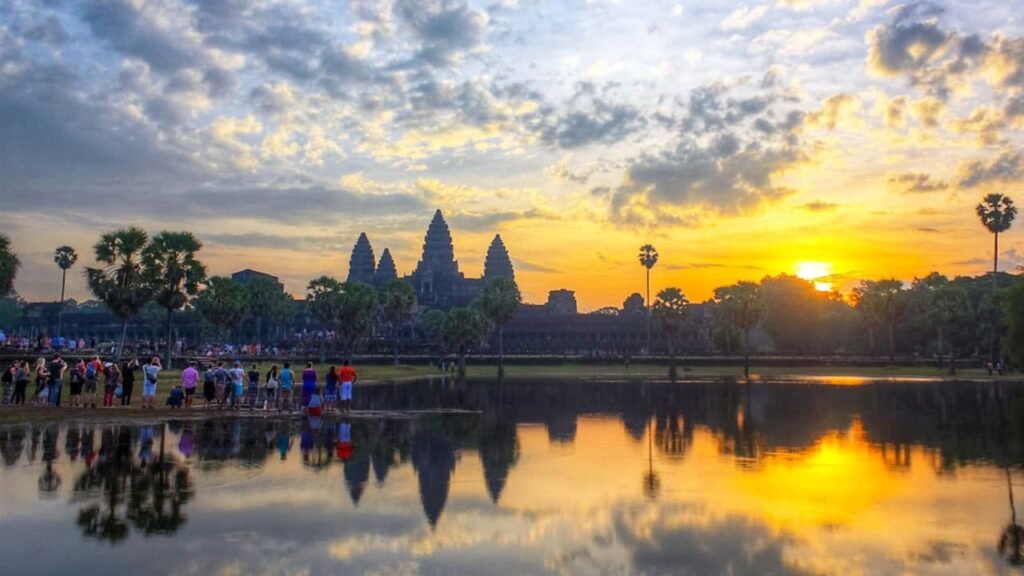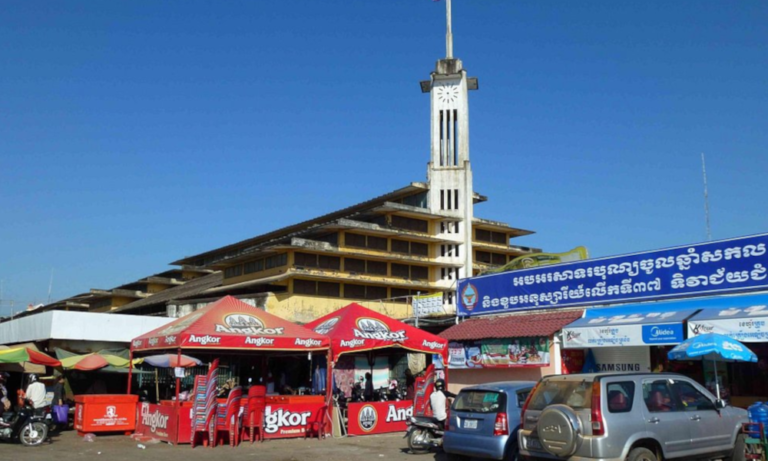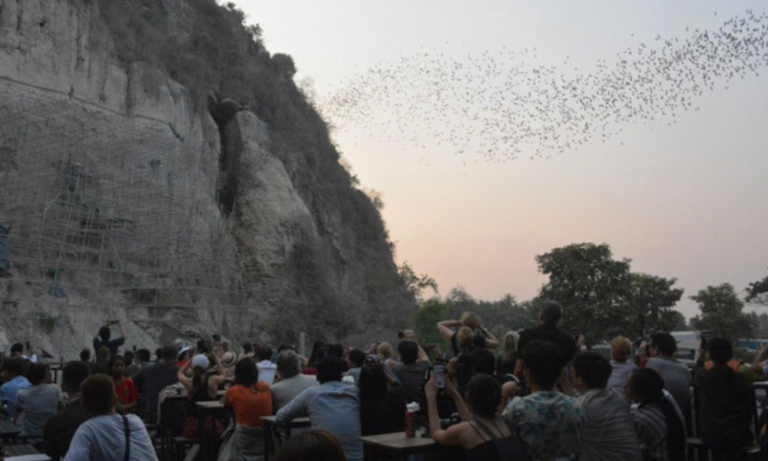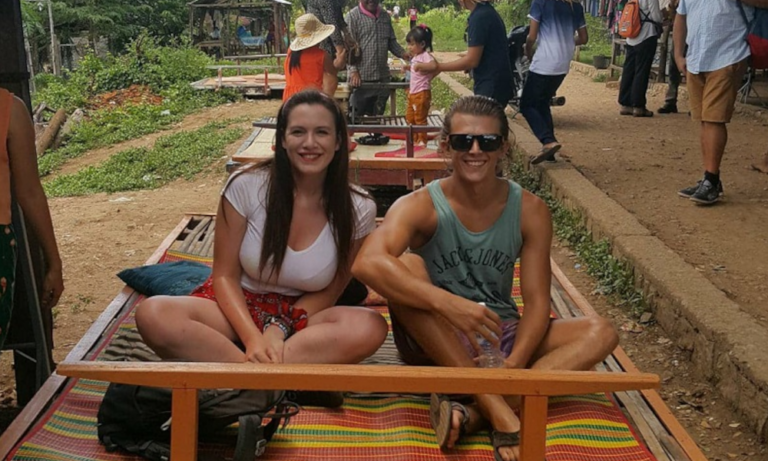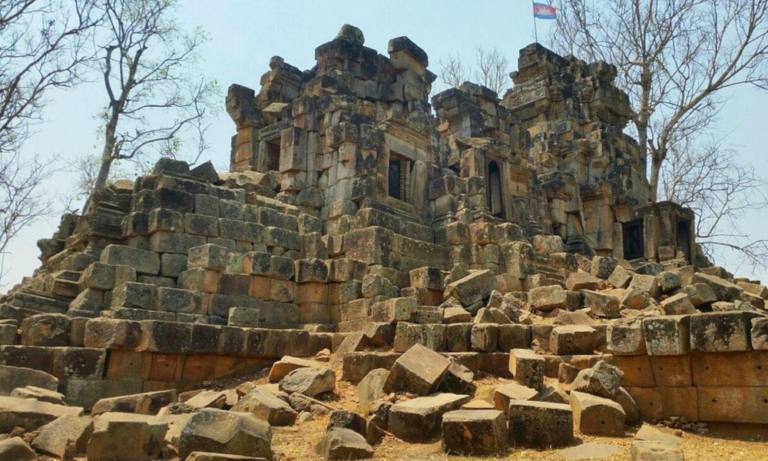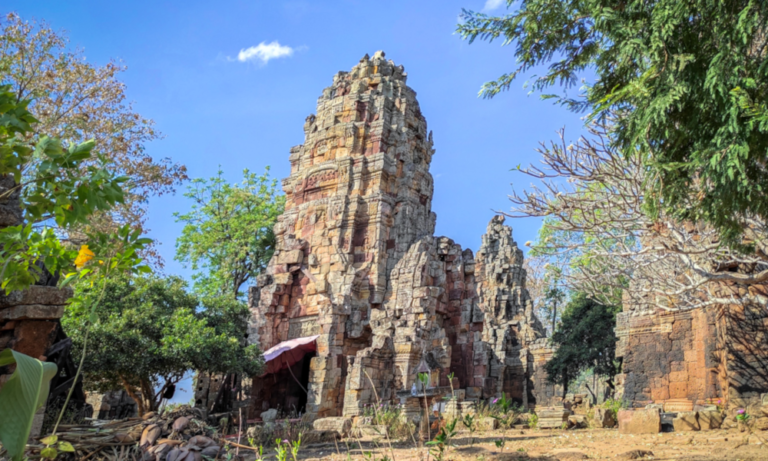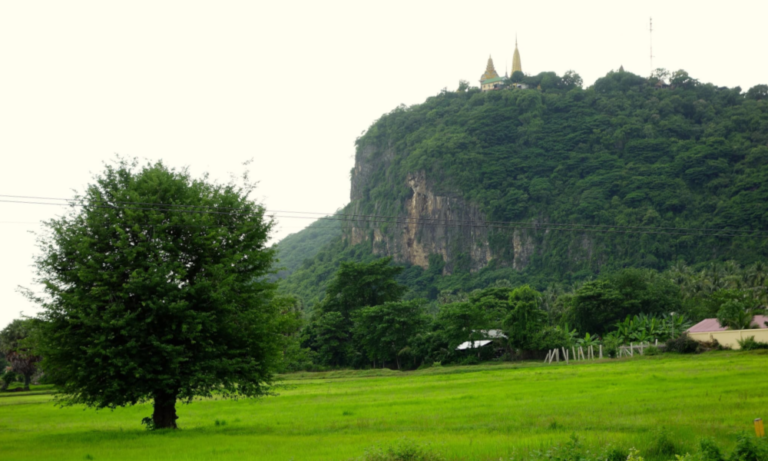The Norry Bamboo Train - Battambang
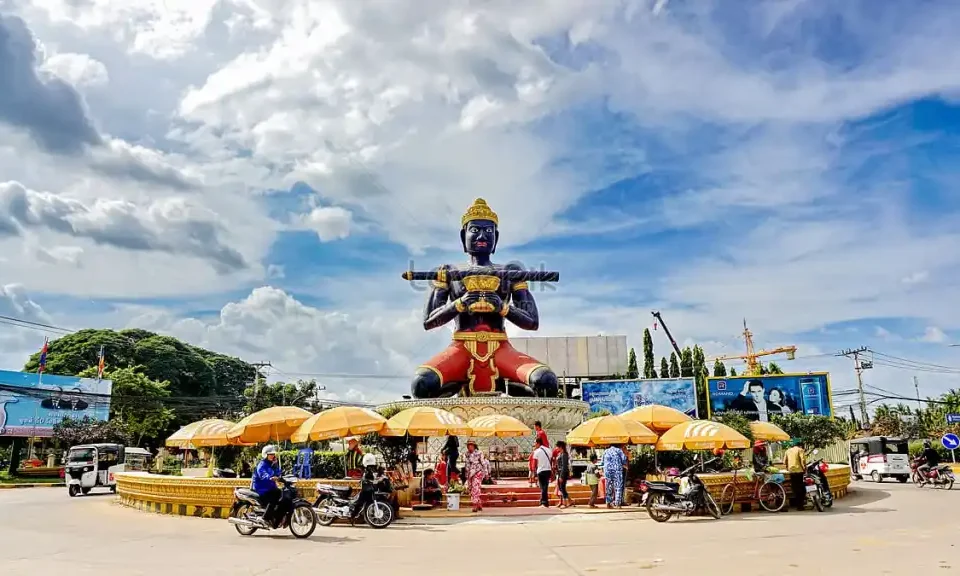
Battambang serves as Cambodia’s second-largest city and is the administrative center of Battambang Province. For individuals seeking an authentic experience of Cambodia beyond the tourist hotspots of Phnom Penh and Siem Reap, this region offers a fulfilling opportunity for a tranquil and enlightening stay of several days.
Table of Contents
ToggleExplore Siem Reap’s iconic temples on this immersive 2-day tour. With a local, English-speaking guide, discover the grandeur of Angkor Wat, the ancient ruins of...
Geography
Battambang Province is situated in the northwestern region of Cambodia, positioned along the western shore of Tonle Sap Lake. It shares its northern boundary with Banteay Meanchey Province, while Pursat lies to the east and south, Siem Reap to the northeast, and Pailin to the west. Additionally, Battambang Province has borders with Thailand adjacent to Pailin. The provincial capital, Battambang City, is located along the Sangkae River. National Highway 5 traverses the province and the city, extending from the Thai border southward to Phnom Penh.
History
Battambang is home to a population exceeding 1 million individuals, with approximately 13% residing in the city itself. Similar to many regions in Cambodia, a significant portion of the populace consists of rural rice farmers, making the province the foremost rice producer in the nation. The city gained prominence as a vital trading hub during the French Protectorate, owing to its convenient connections to Thailand and the waterways of the Tonle Sap.
The civil war had a profound impact on Battambang, as it served as a stronghold for the Khmer Rouge, with hostilities persisting in the area until 1996. During this tumultuous time, the city was largely inaccessible to most visitors, being situated on the front lines of the conflict. Government forces would typically manage to push the Khmer Rouge back towards the neighboring Pailin during the dry season, only to lose much of that territory again with the onset of the monsoon rains. While Battambang has not evolved into a tourist hotspot like Siem Reap, the province remains relatively affluent, largely due to the prosperity of its agricultural industry.
Battambang Attractions
Battambang’s city center stands as a notable attraction in its own right. Adorned with stunning pagodas and French colonial architecture, it presents a stark contrast to Siem Reap, bustling with activity during the day and settling into a serene calm at night. Spending a few hours exploring the streets is highly recommended; one can admire the shophouse architecture, enjoy refreshments at local coffee shops, and participate in Khmer-style aerobics by the riverside at sunset.
- pagodas in Battambang: The pagodas in Battambang are often regarded as some of the most exquisite in the nation. Legend has it that the officer in charge during the Khmer Rouge era held such a deep appreciation for the pagodas that he refrained from executing orders to demolish these sacred structures. As a result, they have remained largely intact despite the regime’s impact and the ensuing civil conflict. Wat TahmRai Saw, located at the terminus of streets 2 and 2.5, is famously known as the white elephant temple and is likely the most frequented due to its intricate design. In addition, Wat Kandal, situated at the end of a tranquil street on the opposite bank of the river, is equally picturesque.
- The Circus: A visit to Battambang is incomplete without experiencing the circus, a notable attraction in the area. The French NGO Phare Ponleu Selpak, which translates to “the brightness of the arts,” provides various artistic training programs, including circus skills, to vulnerable children in the local community. Graduates of this institution perform hour-long shows four times a week under the organization’s big top tent. These performances are vibrant and feature astonishing acrobatics, making them a must-see. Visitors are encouraged to arrive early to enjoy a complimentary drink in the small art gallery, where the works of other young artists are exhibited and available for purchase. An evening spent appreciating the talents of Phare’s artists offers a wonderful opportunity to witness the potential of Cambodia’s younger generation.
- Phnom Sampov: In addition to the circus, Battambang boasts other attractions located a short distance from the city. Phnom Sampov, situated 12 kilometers away, rises 330 feet above the surrounding flatlands, providing breathtaking views from the temple located at its summit. Visitors can hike to the top, although the journey can be quite warm, or they may opt to hire moto drivers who can take them most of the way for a negotiated fare. The caves beneath the mountain, known as the “Killing Caves,” are a somber reminder of the atrocities committed during the Khmer Rouge regime and now serve as a tranquil memorial for the victims who lost their lives there.
- Bamboo Train: The Bamboo Train is a well-known, albeit somewhat unusual, attraction situated approximately 5 kilometers from the town center. In Cambodia, where there is no formal rail service, the local community utilizes the existing tracks along with bamboo platforms mounted on wheels to transport goods between villages. Additionally, they now offer rides to tourists for a fee of $5 each, providing a 20-minute journey between the villages. This round trip includes a pause to reverse the “train” and allows local children to earn some money by offering tours of the nearby rice mill and brick factory. It is advisable to experience this activity earlier in the day to avoid the heat, as there is no shade available, making it an enjoyable way to explore the countryside.
Weather
The climate in Battambang mirrors that of much of Cambodia, characterized by a hot and humid season from May to November, followed by a hot and dry season from December to May. During the wet season, significant portions of the eastern region of the province become inundated due to the flooding of the Tonle Sap.
Should your itinerary permit, a trip to Battambang is strongly advised. Despite being only a four-hour bus journey from Siem Reap (or just under three hours by taxi), it remains relatively unexplored by tourists, making it an ideal destination for a tranquil weekend and an opportunity to experience Cambodia at a more relaxed pace.
Conclusion
Opting to visit Battambang province offers a unique blend of historical significance, cultural richness, and stunning natural landscapes. This region has emerged as an essential destination for individuals seeking to experience the authentic charm of Cambodia. It is anticipated that this article from RT Cambodia Travel will provide valuable insights about the province and highlight intriguing attractions for travelers considering Battambang as their travel choice.
The primary modes of transportation to the city include buses originating from Bangkok, Phnom Penh, and Siem Reap. The airport experiences limited usage, and the passenger rail service has yet to be reinstated. Additionally, there exists a daily boat service between Battambang and Siem Reap along the Sangkae River, except during the dry season’s lowest water levels. Given that buses offer a quicker and more economical option, scenic boat trips are predominantly utilized by tourists and a few residents residing along the river.
Bus and Van Services:
Numerous bus companies, including Giant Ibis, Mekong Express, PSD Xpress, Sorya Bus, Neak Krohorm, Thero Express (15-seat), Larryta, KSO, Virak Buntham, Kampot Express, and Cambodia Post VIP Van, provide transportation services to Sihanoukville. These companies operate modern, air-conditioned buses and vans, with departures scheduled every 15 minutes to one hour from 6 AM to midnight. The fares are quite reasonable, and online bus tickets can be purchased in advance.
Shared Taxis:
Most shared taxis leave Phnom Penh before 10:00 am, although options may still be available in the early afternoon. The fare typically ranges from $3 to $5 per person. These shared taxis provide a cramped and uncomfortable journey, often accommodating eight or more passengers in a small vehicle. In contrast, private taxis cost approximately $20 to $25. In Phnom Penh, taxis can be found waiting at the southwest corner of the Central Market (Phsar Thmey), while in Sihanoukville, taxis heading to Phnom Penh are located on Street 108.
It is now quite convenient, to reserve a private taxi online before your arrival.
Traveling by Train
There’s a popular saying that nothing comes for free, but in Cambodia, the old train ride is an exception for foreigners. While it won’t cost you any money, be prepared to invest some time (and perhaps a friendly officer might suggest a creative donation). The trip from Phnom Penh to Battambang typically takes around thirteen to fourteen hours, provided everything goes smoothly. Although the views may not be as breathtaking as those along the Phnom Penh-Kampot-Sihanoukville route, you’ll still enjoy a delightful glimpse of rural agricultural landscapes.
Schedule:
– Phnom Penh to Battambang: departs daily between 6:20 and 7 am
– Sisophon to Battambang: departs daily around 2 pm
– Battambang to Phnom Penh: departs daily between 6:30 and 7 am
– Battambang to Sisophon: departs daily between 6:45 and 7:15 am

